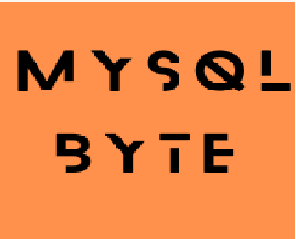As of October 2021, MySQL 5.7 has reached its end of life and is no longer supported by Oracle. This means that there will be no more updates or security patches provided for this version of MySQL.
If you are currently running MySQL 5.7, it is recommended that you upgrade to a newer version of MySQL as soon as possible to ensure that your database is secure and up-to-date.
Upgrading from MySQL 5.7 to a newer version, such as MySQL 8.0, may require some preparation and testing to ensure a smooth transition. It is important to consult the MySQL documentation and consider the potential impacts on your applications and infrastructure before making any changes.
In addition, it is always a good practice to regularly backup your database to ensure that you can recover your data in case of any unexpected issues or failures.
Upgrading MySQL from version 5.7 to 8.0 involves several steps, including checking for compatibility issues, backing up your data, and performing the upgrade itself. Here's a general overview of the
process:
1. Check for compatibility issues: Before upgrading, it is important to check for any compatibility issues between your applications and MySQL 8.0. You can use the MySQL Compatibility Checker tool to identify any potential issues and address them before the upgrade.
2. Back up your data: It is crucial to back up your existing MySQL 5.7 data before upgrading to MySQL 8.0. You can use MySQL's built-in backup tool or third-party backup solutions to create a backup of your databases and configuration files.
3. Install MySQL 8.0: You can install MySQL 8.0 by downloading the installation package from the official MySQL website or using your operating system's package manager. Make sure to follow the instructions for your specific platform.
4. Migrate your data: Once you have installed MySQL 8.0, you can migrate your data using the MySQL Upgrade Tool or by manually exporting and importing your data.
5. Update your applications: After the upgrade, you may need to update your applications to ensure compatibility with MySQL 8.0. This may involve updating configuration files or modifying queries to account for changes in the new version.
6. Test your installation: Once you have completed the upgrade, it is important to test your installation to ensure that everything is functioning properly. You can use MySQL's built-in testing tools or third-party testing frameworks to verify the integrity of your data and applications.
7. Verify server configuration: After the upgrade, it is important to verify that the MySQL server configuration is set up correctly. Check the new version's documentation to see if any configuration changes are required for the version you've upgraded to.
8. Check for performance issues: Once you've migrated your data, it is important to check for any performance issues that might have arisen as a result of the upgrade. Check the MySQL error logs for any warnings or errors that might indicate a problem with your new installation. You can also use the MySQL Performance Schema to monitor query performance and identify any bottlenecks or other issues.
9. Implement security best practices: MySQL 8.0 includes several new security features, such as the ability to use encrypted connections by default and enhanced password management. It is important to take advantage of these features and implement other security best practices, such as enabling auditing, using strong passwords, and limiting user privileges.
10. Maintain and monitor your installation: After completing the upgrade, it is important to regularly maintain and monitor your MySQL installation to ensure that it remains secure and performant. This includes performing regular backups, monitoring server logs, and keeping your software and applications up-to-date.
Upgrading MySQL from 5.7 to 8.0 can be a complex process, and it is important to follow best practices to ensure a successful upgrade. It is also recommended to consult with a MySQL expert or consult the official MySQL documentation for more detailed instructions on upgrading to MySQL 8.0.


No comments:
Post a Comment